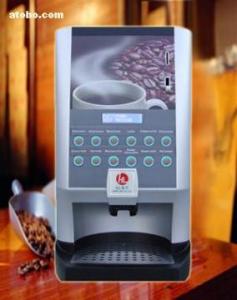Introduction of how to calculate the extraction rate of coffee and how to use the time method of the calculation formula
Introduction of how to calculate the extraction rate of coffee and how to use the time method of the calculation formula
1. Reasonable range
For a cup of erpresso, 30ml in 25 seconds was once the golden rule that everyone kept in mind. However, in the continuous exploration and attempt of boutique coffee, a group of reformed knowledge-based barista appeared among coffee people, who almost completely abandoned the restrictions and interpreted espresso with their own understanding of coffee.
The Golden Cup Rule is the most authoritative industry standard at present. This standard is widely recognized precisely because it is easy to understand and apply. A coffee extraction rate of 18% to 22% can lead to the aroma and taste of coffee. Corresponding to different proportions of water, it can satisfy the taste preferences of different people in terms of concentration.
How different are the so-called taste preferences? The two major guilds said: tds=1.15%~1.35% (SCAA), 1.2% and 1.45% (SCAE).
There is really no restriction on the concentration range of espresso in the Golden Cup rule, as long as the extraction rate is appropriate, the concentration is up to me!
2 、 EBF
EBF= Espresso Brew Formula, that is, the ratio of coffee powder to coffee liquid.
At present, the extraction principle of all Italian coffee equipment on the market is to carry out through-type extraction under pressure. In pass-through extraction, the concentration decreases with the increase of extraction time (extraction rate). Is it a bit of a mouthful here? Then imagine that if we want to maximize the extraction rate of a pressed powder to 30%, all we can do is to keep extracting until the water coming out of the handle is pure water. So, at this time, is the coffee concentration in the cup lower than the extraction rate of only 20%? On the other hand, a cup of espresso with relatively high concentration will have a relatively low extraction rate.
Therefore, our colleagues have done a very useful data collation, probably summed up the 'typical' espresso powder, coffee liquid ratio, both ebf50%. For example: powder 18g: liquid 36g. Pay attention! It is typical of typical, not standard standard.
3. EBF correction
In the reasonable extraction range of espresso-18%-22%, to ensure the complete embodiment of aroma and taste, the typical espresso,ebf can be controlled at about 50%. If it is atypical espresso, it depends on personal preference and equipment performance!
In the work, EBF can be corrected by "grinding coarse and fine grinding", "adding some powder, reducing powder", "more extraction point, less extraction point", "more water release, less water release".
EBF can help you decide when to grind, when to adjust the amount of powder, and when to control the flow of coffee.

Important Notice :
前街咖啡 FrontStreet Coffee has moved to new addredd:
FrontStreet Coffee Address: 315,Donghua East Road,GuangZhou
Tel:020 38364473
- Prev

Know two temperatures. One is the starting and ending temperature of foaming, and the other is the temperature at which the milk foam is made.
Know two temperatures. One is the starting and ending temperature of foaming, and the other is the temperature at which the milk foam is made. Every time I communicate with my friends on this subject, I only get some very general results. For example: be delicate (what is delicacy? No one can explain it in precise words), like velvet (what is velvet? As an animal protected by the state, several people dare to fight for a day.
- Next

Learn to make caffeine from scratch-what professional problems you will encounter when making coffee
Learn to make lace coffee from scratch-you will encounter those professional problems when making coffee lace: 1. Pour the milk into the milk bubble pot, the amount should not exceed 1max 2 of the milk bubble pot, otherwise the milk will overflow due to expansion when making the foam. 2. Heat the milk to about 60 degrees, but not more than 70 degrees, otherwise the protein structure in the milk will be destroyed. Be careful!
Related
- What is the meaning of lactic acid fermentation with coffee bean treatment?
- How to judge the state of foam by sound?
- How does the latte pull out the unicorn pattern? Come to get for a little trick to improve the flower pull!
- Will flower pulling affect the taste of the latte?
- Do you know the history of coffee?
- The difference between honey treatment and sun washing what is raisin honey treatment?
- What kind of milk can a novice use to make coffee foam to keep the foam longer? The correct method and skills of milking tutorial sharing
- Why do washed coffee beans taste sour? Flavor characteristics of washed Coffee
- Introduction to the skill of how to practice the size and height of water injection around the circle of hand-brewed coffee
- How do beginners practice coffee flower drawing from scratch?

